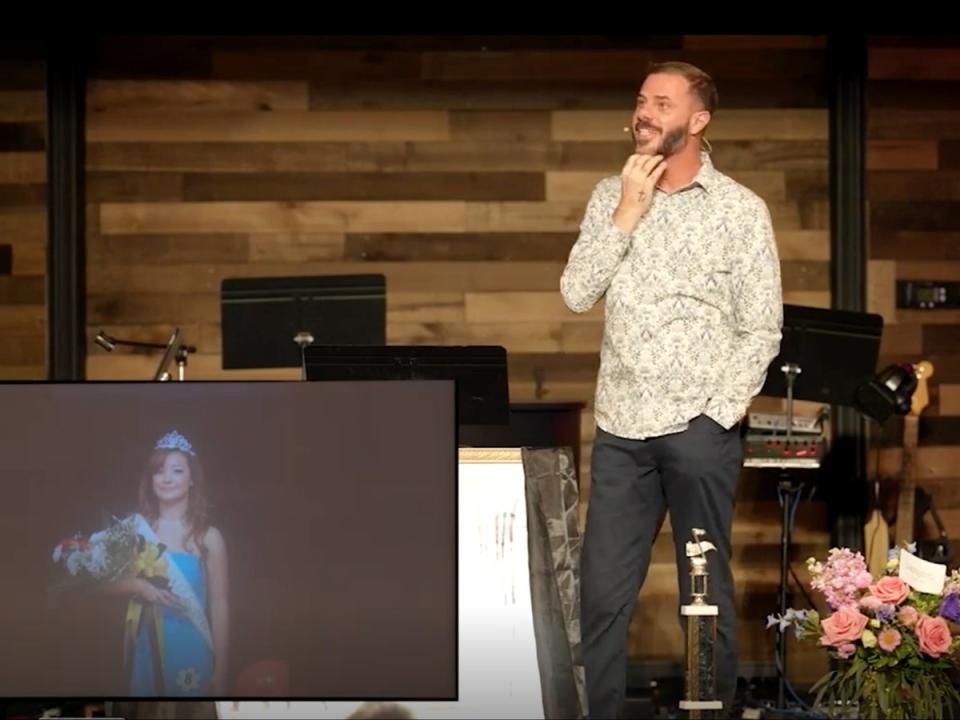
Greenpeace attorneys and staff pose for a group photo outside the Morton County courthouse Feb. 26, 2025, after the first day of trial in a case brought by Energy Transfer. The judge in the case has denied media requests to photograph the trial. (Mary Steurer/North Dakota Monitor)
An attorney representing the developer of the Dakota Access Pipeline told a jury of Morton County residents on Wednesday morning that Greenpeace was secretly behind the protests that halted its construction back in 2016.
“They didn’t think that there would ever be a day of reckoning, but that day of reckoning starts today,” Trey Cox said in opening arguments for Energy Transfer’s case against the environmental group.
Advertisement
Advertisement
Energy Transfer is expected to spend the next two weeks presenting its case. The full trial is scheduled for five weeks, not including jury deliberation.
The company says that Greenpeace backed unlawful, destructive behavior by Dakota Access Pipeline protesters who camped near the Standing Rock Reservation in 2016 and 2017. It also says that Greenpeace launched a misinformation campaign to undermine the project, causing a six-month construction delay and inflating the pipeline’s financing costs.
Energy Transfer seeks roughly $300 million from Greenpeace.
In his opening, Cox said Energy Transfer will show the protests started out peaceful but took a turn after Greenpeace arrived on the scene. He said Greenpeace harmed Energy Transfer’s reputation by falsely claiming that Energy Transfer was careless in its management of the project, and that the energy company’s security contractors used extreme violence against peaceful demonstrators.
Advertisement
Advertisement
The demonstrations were in solidarity with the Standing Rock Sioux Tribe, which says the pipeline violates tribal sovereignty, disrupts sacred sites and endangers its water supply.
Cox also said he will present evidence that Greenpeace paid for six of its employees to embed within the protest camps and to train protesters.
That includes communication records in which Greenpeace employees say the organization successfully put public pressure on federal regulators to delay an easement to cross Lake Oahe, a reservoir on the Missouri River near the Standing Rock Reservation, Cox said.
More in U.S.
Cox claimed Greenpeace falsely claimed that the pipeline crossed into the Standing Rock Reservation and that the pipeline bulldozed numerous archeological zones.
Advertisement
Advertisement
Energy Transfer alleges Greenpeace’s statements about the Dakota Access Pipeline caused eight banks to back out of financing the pipeline’s construction.
Greenpeace denies all of Energy Transfer’s claims, and says Energy Transfer is unfairly targeting the environmental group to intimidate activists. Attorneys provided three separate opening statements for Greenpeace — one for the organization’s U.S. branch, one for its international branch and a third for a nonprofit called Greenpeace Fund.
Everett Jack, lead attorney representing the U.S. arm of Greenpeace, said Energy Transfer will not be able to provide evidence that Greenpeace was responsible for any of the financial harms the company suffered due to the protests.
He said that the demonstrations gained momentum well before Greenpeace got involved. The alleged destruction of Native sacred sites, confrontations between security and protesters and significant developments in the pipelines’ permitting process all caused the protests to swell independent of any action by the environmental group, Jack said.
Advertisement
Advertisement
He added it is Greenpeace’s policy not to get involved in Indigenous rights matters unless tribal communities ask them to.
“Why did Greenpeace get involved? Because it was asked, and only because it was asked,” he said.
Jack said that despite this, Energy Transfer is attempting to blame all of its unbudgeted expenses related to the pipeline on Greenpeace.
He also said that Greenpeace never claimed the pipeline crossed through the Standing Rock Reservation. Greenpeace stated that the pipeline crosses unceded land recognized as belonging to the Sioux Nation in an 1851 treaty with the U.S. government, Jack said.
Advertisement
Advertisement
Jack said that the delayed construction and additional financing costs stemmed from the federal government’s decision to delay an easement, as well as a lawsuit brought by the Standing Rock Sioux Tribe against the Army Corps of Engineers.
Attorneys for Greenpeace International and Greenpeace Fund said their respective organizations never had any employees go to the protests and did not support the demonstrations financially.
Many members of the jury pool on Monday disclosed that they have negative memories of how the protests affect their community. Some also said they worked in the energy industry.
Energy Transfer in 2019 donated $3 million to the city of Mandan, where the trial is being held, for improvements to the library and downtown plaza.
Advertisement
Advertisement
Greenpeace on Tuesday made another plea to Gion to move the lawsuit to a different court. Gion denied the request, according to Deepa Padmanabha, Greenpeace senior legal advisor.
The plaintiffs and defendants are represented by teams of lawyers from elite law firms, including some who are monitoring the trial from a remote livestream.
The livestream is not open to the public.
Gion remained in opposition to recording, photography or the use of electronic devices in the courtroom. He warned Wednesday morning that any attorneys found in violation of these restrictions could face sanctions.
The court needs to “have control of what goes out there so we don’t have a problem with sequestration of witnesses,” he said.
Advertisement
Advertisement
A group of attorneys monitoring the trial on Wednesday afternoon asked the North Dakota Supreme Court to review Gion’s decision to deny live streaming access to the public.
A ruling against Greenpeace could hurt First Amendment rights and the climate movement, the group said in a press conference outside the courthouse.
“The law that can come down in this case can affect any demonstration,” said Marty Garbus, who has represented civil rights figures in several high-profile cases, including Leonard Peltier, Nelson Mandela and Daniel Ellsberg.
In a separate lawsuit over the pipeline, the state of North Dakota seeks $38 million from the U.S. Army Corps of Engineers. The Army Crops has jurisdiction over the portion of the pipeline that passes underneath Lake Oahe, and owns the land that became site of the largest protest camp during the demonstrations.
Advertisement
Advertisement
North Dakota alleges that by allowing protesters to use its land, the Army Corps caused the protests to spiral out of control, causing the state to incur $38 million in damages. A judge has yet to rule on the case.
The Standing Rock Sioux Tribe in October filed another lawsuit against the Army Corps for allowing the pipeline to continue operating without an easement.
SUPPORT: YOU MAKE OUR WORK POSSIBLE
SUBSCRIBE: GET THE MORNING HEADLINES DELIVERED TO YOUR INBOX
EMEA Tribune is not involved in this news article, it is taken from our partners and or from the News Agencies. Copyright and Credit go to the News Agencies, email news@emeatribune.com Follow our WhatsApp verified Channel





